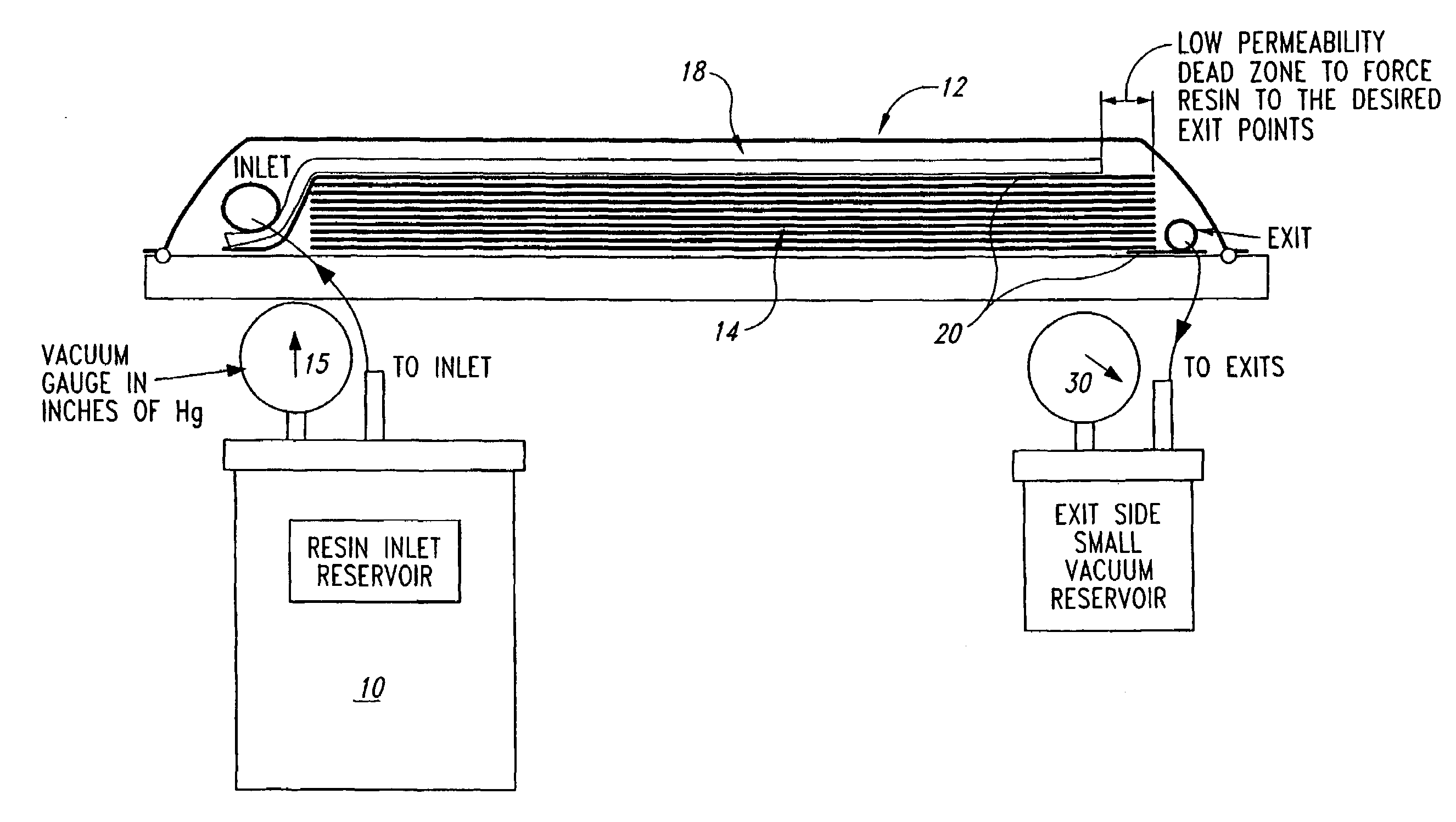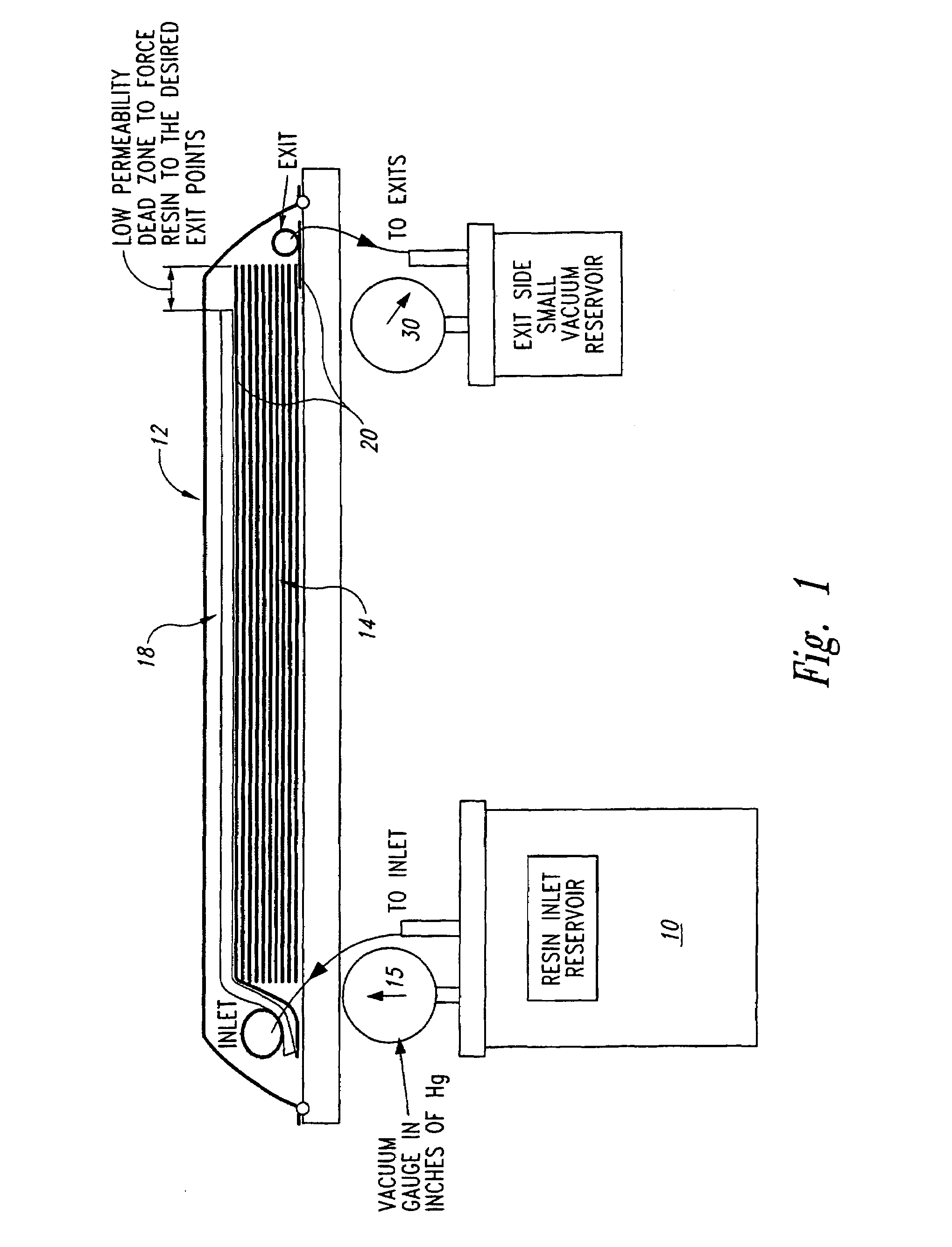Controlled atmospheric pressure resin infusion process
a technology of vacuum only and resin infusion, which is applied in the direction of chemistry apparatus and processes, other domestic articles, layered products, etc., can solve the problems of unfriendly process, high cost, and high cost of resin infusion, and achieve the effect of reducing the risk of workers
- Summary
- Abstract
- Description
- Claims
- Application Information
AI Technical Summary
Benefits of technology
Problems solved by technology
Method used
Image
Examples
Embodiment Construction
[0026]Resin infusion processes that do not control internal pressure have had limited success in attaining desired fiber volumes in finished composite structures, components, and details. Our controlled atmospheric pressure resin infusion (CAPRI) process controls the fiber volume adequately to achieve the highest volume fractions possible, we believe, for a given preform architecture. CAPRI can achieve equivalent or higher fiber volumes than those achieved for composites made from prepregs and cured by autoclave. CAPRI does not require pressure vessels as processing equipment that are expensive and, often, rate limiting. Therefore, CAPRI is a preferred method for making aerospace-grade composites where controlling the fiber volume fraction (or “per ply” thickness) is important to obtain composites having the optimum specific strength (i.e., load carrying capability / unit weight or strength / mass).
[0027]CAPRI recognizes that the level of pressure on the inlet resin profoundly influence...
PUM
| Property | Measurement | Unit |
|---|---|---|
| net compaction pressure | aaaaa | aaaaa |
| pressure | aaaaa | aaaaa |
| pressure | aaaaa | aaaaa |
Abstract
Description
Claims
Application Information
 Login to View More
Login to View More - R&D
- Intellectual Property
- Life Sciences
- Materials
- Tech Scout
- Unparalleled Data Quality
- Higher Quality Content
- 60% Fewer Hallucinations
Browse by: Latest US Patents, China's latest patents, Technical Efficacy Thesaurus, Application Domain, Technology Topic, Popular Technical Reports.
© 2025 PatSnap. All rights reserved.Legal|Privacy policy|Modern Slavery Act Transparency Statement|Sitemap|About US| Contact US: help@patsnap.com



